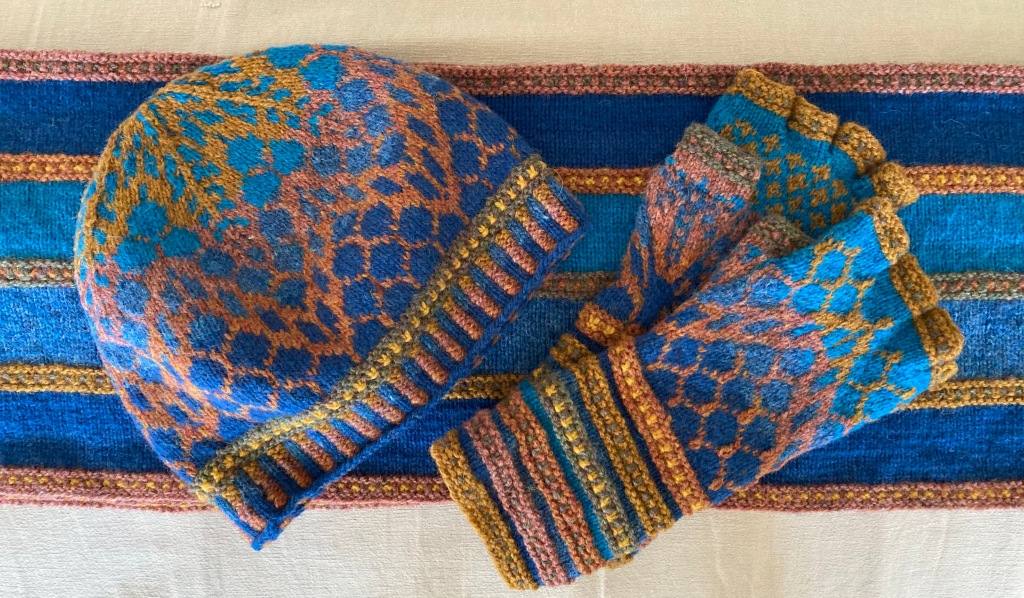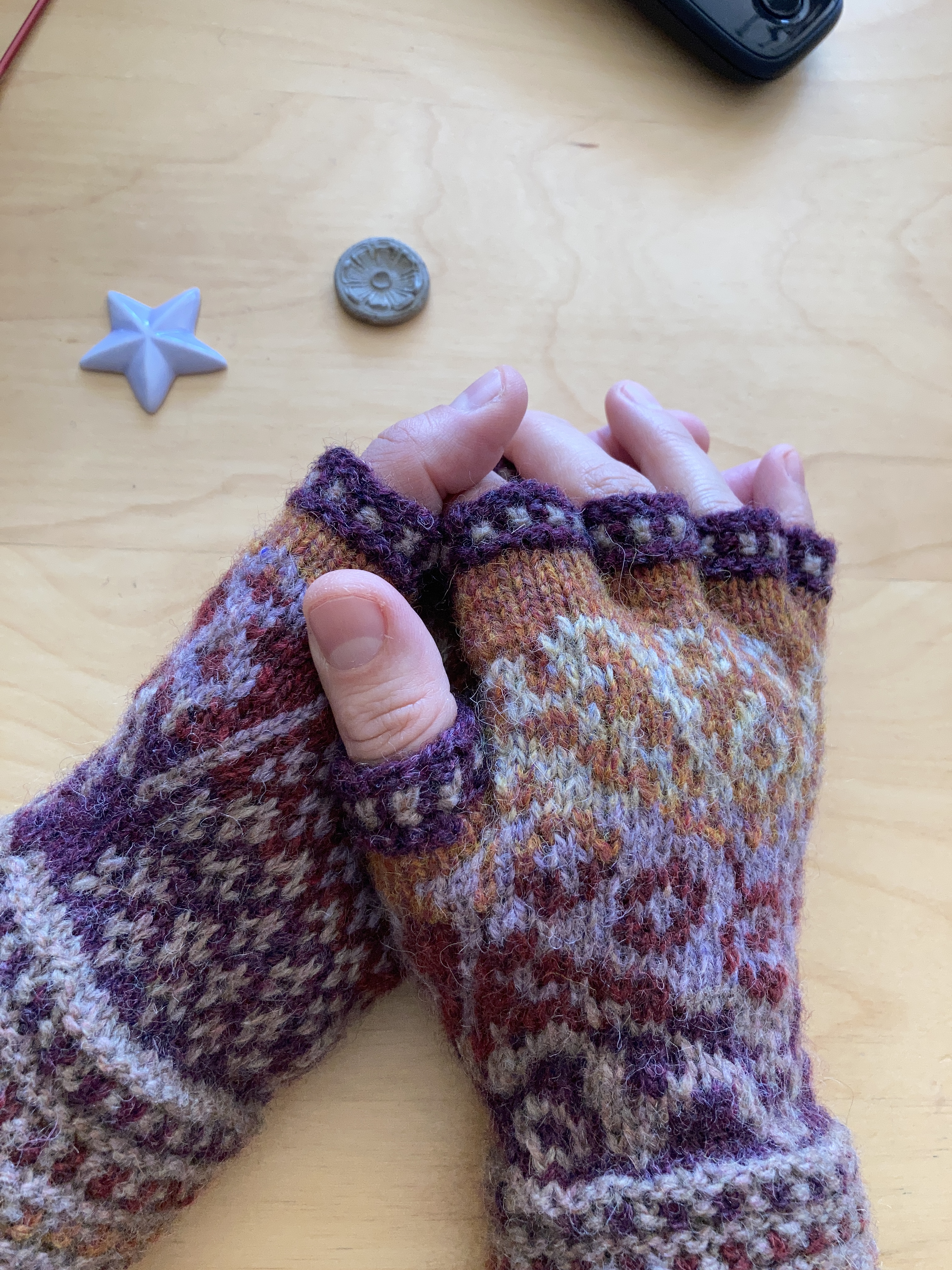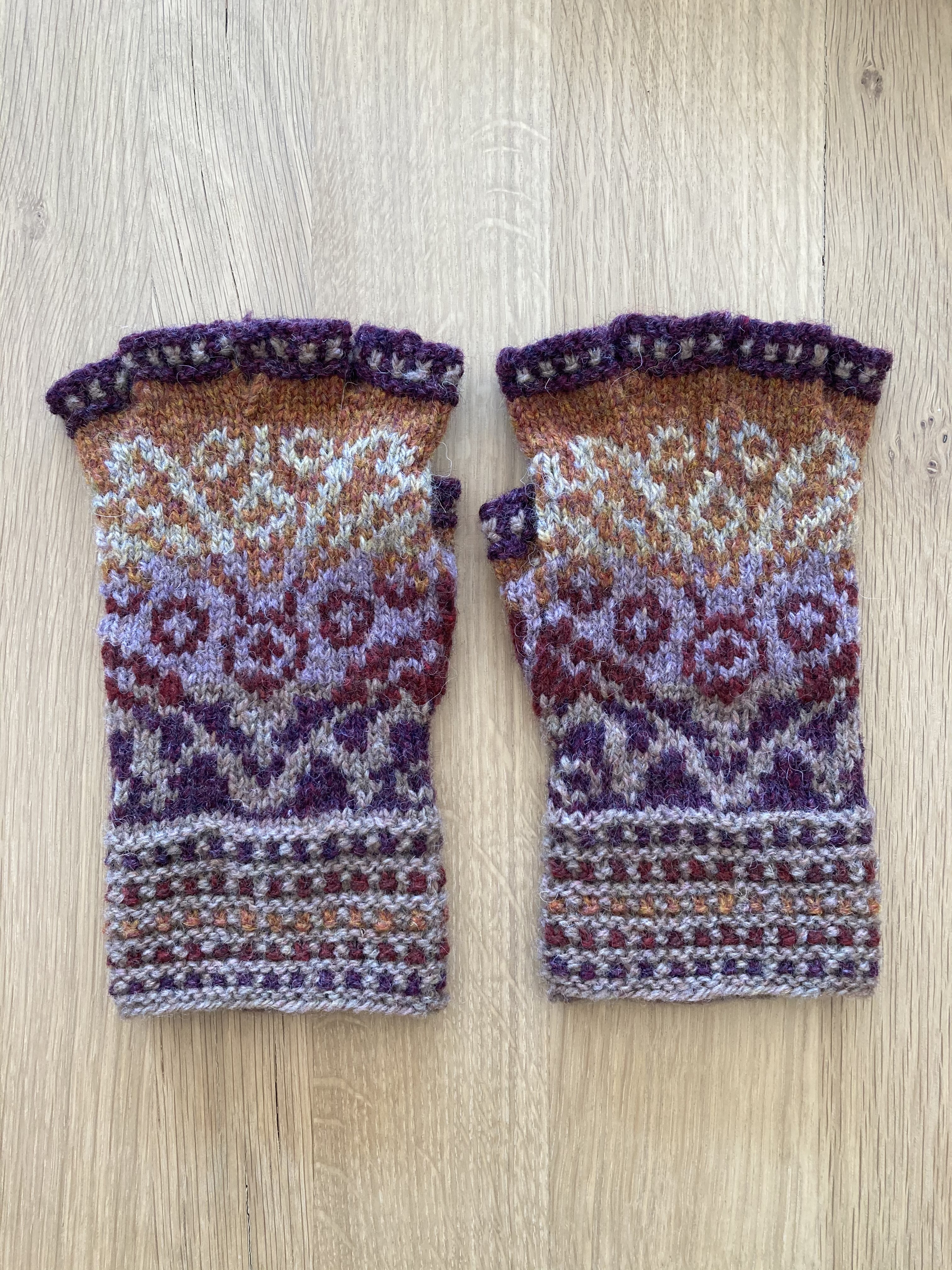
Having knitted the cardigan, I thought it would be nice to have a matching accessories set.
Maybe it is a bit over the top to wear all of this together. 🤔 Or maybe not 🤓 Hmm, well, I’ll have to think about it… Anyway, I believe everyone knows by now how much I ❤️LOVE❤️ Alice Starmore’s patterns and the glorious colours of the yarn.
The pattern for the hat and fingerless gloves is available as a patterncard kit. The scarf is based on the cardigan pattern and my own calculations (see below).
The kit also includes instructions and yarn for a beret and handwarmers, but I preferred to use the excess yarn from this kit and what I had left over from the cardigan for a scarf instead.
The hat set lacks two of the colours used in the cardigan: Machair and Whinn. I thought this a pity, and since I still had some yarn in these colours, I modified the colour sequence in the garter stitch bands to incorporate these two colours as well.
This set is a good introduction to the more complex Alice Starmore patterns, since it includes quite a few advanced techniques but is not quite as daunting a project as a cardigan or sweater.
My notes on the pattern:
The cap
I like to make a set up row for the corrugated ribbing, i.e. introduce both colours in knit stitch, K2 in colour A and K2 in colour B, before starting the ribbing. That way you avoid having two-coloured purl stitches in the first row.

I made the garter stitch band in Machair and Whinn.
Maybe it’s me, but I could not gather from the pattern what colour the decrease stitches should be worked in. I think I did it wrong in the end, using the pattern colour all the way up, but I am quite pleased with the result.
The fingerless gloves
I made size small. While the rest of the fingers fit snugly, the thumb is 24 stitches in the round, which is a bit wide (at least for my thumb). Next time, I am planning to decrease 2 and make the thumb 22 stitches.
(In the meantime I have knitted another pair as well as the Herald fingerless gloves. Scroll to bottom of the page to read an update on the fingerless gloves.)
The longest floats in the Damselfly pattern are 5 stitches long. I did not bother to catch them in the hat. But gloves are a different matter. You do not want your fingers getting tangled up in the loops every time you put on the gloves. So, here I would catch either the middle stitch or the 2nd and 4th stitches in alternate rows. Catching floats onto the same stitch in consecutive rows makes them more visible from the right side (the so-called grinning effect) and is to be avoided.
The scarf
To make the scarf I cast on 385 stitches. The scarf weighs 140 g and is 154 cm long and 23 cm wide.
The blue stripes are 16 rows wide and the first and last 5 stitches in these stripes are in garter stitch to avoid curling.

I used the Icelandic cast off.
The advantage of knitting a scarf sideways is that you get perpendicular stripes when wearing the scarf. The disadvantage is that you only know when it is too late, whether your scarf will be long enough. It turned out just long enough, but I could have added another 15 sts to get a scarf of a length corresponding to my height, which is a good rule of thumb for calculating scarf lengths.
The tension is the same as for the cardigan (27 sts = 10 cm in stocking stitch). If you find that the math does not add up, you are right! This is because the garter stitch bands have a looser tension and they determine the length of the scarf.
Someone asked to see the wrong side of the scarf, so here it is. Ideally, a scarf should not have a wrong side, but as wrongs sides go, it is not that bad, IMHO.

Update on the fingerless gloves
In the meantime, I have made a pair of Herald fingerless gloves and a second pair of Damselfly fingerless gloves. I made the thumbs 20 stitches, and they fit perfectly.
The pattern of the Herald gloves is 35 rows tall, which means that the palm pattern ends in the middle of a cross. I added one more row οn the inside of the hands to finish off the crosses.



I made a second pair of Damselfly gloves, because I wanted narrower cuffs, like the ones on the Herald gloves.




